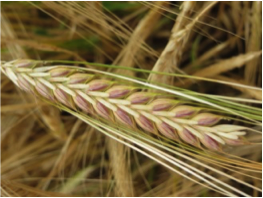Malt from the 2016 Maris Otter harvest will produce around 450 million pints of craft beer
Maris Otter Facts
Maris Otter Barley
Maris Otter is a specialist English barley variety which last year, 2015, reached its 50th anniversary. This is an exceptional record: most cereal varieties are superseded within 5 or 6 years. The rights are owned by grain merchants H Banham and Robin Appel, who helped rescue the variety back in the early 90s. They supply the grain to maltsters who process it for brewers.
MARIS OTTER Malt
Malt is cereal grain, usually barley, which has been through a traditional three-step process: steeping, germinating and kilning. Maris Otter malt is renowned among craft brewers for its consistent performance in the mash tun, and among drinkers for the characterful, flavoursome beer it produces.
Ten out of CAMRA’s most recent 16 Champion Beers of Britain were brewed with Maris Otter malted barley. Astonishing given the relatively small amount that is produced…
The market
Maris Otter makes up less than 10% of the brewing malt market in the UK – so its success as a key ingredient of so many Champion Beers is all the more remarkable.
With the revival of the craft beer sector, interest in ingredients is extending, and demand for specialist malt and hop varieties is growing rapidly. Maris Otter is a beneficiary of this growth.
Maris Otter Malt is now exported to over 20 countries worldwide.
Crisp Malting Group, strong advocates for Maris Otter, have been working with growers since the variety was first created, and still today use their traditional floor maltings to produce the finest Maris Otter Malt, which they supply to craft brewers across the world.
Maris otter history
Maris Otter is a low-nitrogen winter barley (sown in the autumn and harvested a few weeks before the spring varieties), cross-bred from Proctor and Pioneer in 1965 by the Plant Breeding Institute in the UK. Its popularity grew quickly and it dominated the market throughout the 1970s. However, by the late 80s it had fallen out of favour with many of the larger breweries – and was taken off the NIAB (National Institute of Agricultural Botany) recommended list in 1989.
Despite the snub and the fall in volumes, a number of brewers remained loyal to the breed. They said the malt it produced performed excellently in the mash tun, and the resulting beers had a depth of flavour unmatched by those made with other malts. This commitment from a small group of brewers encouraged grain merchants H Banham and Robin Appel in their quest to save the variety. Between them, in 1992, the merchants bought the rights to it – and they are still the sole owners.
There was a lot of work to do to re-establish the purity of the strain and the process of “re-selection” played a crucial role. It involved manually picking out the purest stock and using it to start a new breeding cycle.
Now – The Secret Plot
H Banham has continued to follow the practice of re-selection, using a secret field in the wilds of South England dedicated to maintaining the integrity of the variety.
“We regularly take a 30m2 patch of our special mother field and go through it manually, checking each and every ear of barley,” says H Banham director Tom Rivett. “Anything that isn’t a perfect specimen of Maris Otter is discarded. The remaining flawless grain from that patch is harvested separately and used to reseed the mother field. The mother field then supplies the farmers who grow the grain for the maltsters.
“It’s a big responsibility, but as shared custodians of the variety, we’re utterly committed to ensuring its integrity. The cultivation procedures and all the checks we undertake are extremely rigorous. Each year’s crops are measured against control samples to see that they remain true-to-type over the generations.
“Of course we’re lucky in terms of our location,” he adds, “The sunny climate, sea breezes and light soils make ideal growing conditions for Maris Otter. Most of the country’s supply is produced – and malted – in our region for that very reason.”






